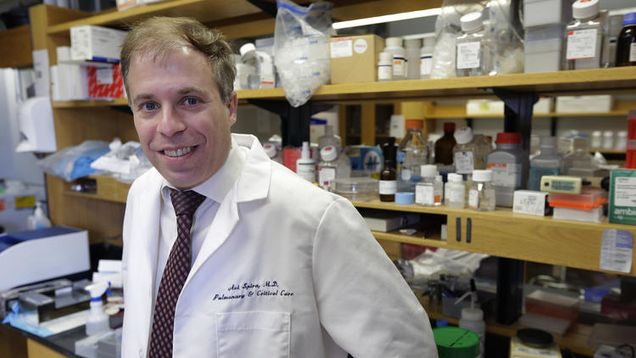Johnson & Johnson expands project that aims to predict, prevent diseases
March 22, 2016 | Written By: Tribune news services | Source: ChicagoTribune
Johnson & Johnson has ramped up its ambitious project to learn how to predict who will develop particular diseases and find therapies to prevent or stop the disease early, when it’s most treatable.
Since the health care giant announced its groundbreaking project in February 2015, it’s expanded to include two dozen research programs with partners — in government, universities, patient advocacy groups and other drug and diagnostic test companies. Their expertise and resources should speed discoveries and allow Johnson & Johnson to spread its funding across more ventures.
On Tuesday, J&J gave an update and announced the latest two projects. They’re meant to identify which pregnant women will develop gestational diabetes, and to identify and treat people at risk of or in early stages of chronic obstructive pulmonary disease, the third-leading cause of death worldwide.
“We’ve really been trying to introduce a new paradigm,” the J&J project head, Ben Wiegand, told The Associated Press in an exclusive interview. “We’re moving from disease care to health care.”
Wiegand said the mapping of the human genome and other recent scientific advances have made that goal feasible. J&J’s “Disease Interception Accelerator” now is working on multiple studies in Type 1 and gestational diabetes, cataracts and vision-damaging presbyopia, depression in women during and after pregnancy, lung disorders and cancers of the cervix, mouth and throat caused by human papilloma virus.
The project is remarkable in an industry whose bread and butter is medicines that patients with chronic diseases take for years.
The idea is to first discover biomarkers — measurable biological and molecular signs in blood and other patient samples — indicating a disease will develop or is beginning. Next, scientists would develop affordable and easy-to-use diagnostic tests for those biomarkers.
Finally, researchers would develop new therapies, or determine which existing ones would work, to head off full-blown disease in those people. Those could include medicines, nutrition changes and physical or psychological therapy.
If successful, those strategies could be used much as cholesterol tests are given to patients, with those who have a problem being prescribed statin drugs to prevent a heart attack or stroke.
“This is the way to go,” said Dr. Robert Hardi, president of the Academy of Physicians in Clinical Research. “If anybody can pull it off, they can” — with help from partners.
He noted that researchers already are developing biomarker tests in areas such as cancer that help doctors pick the best treatment for each patient.
“It may well save a lot of money and a lot of suffering,” added Hardi, a gastroenterologist in Chevy Chase, Maryland.
One of the newest projects piggybacks on existing research at Boston University School of Medicine. It’s been working since 2011 under a Defense Department grant to identify which military members and veterans will develop lung cancer. That group has a high risk because many are heavy smokers and they’re exposed to fuel fumes and other dangerous substances while deployed, said Dr. Avrum Spira, a pulmonologist heading that study.
It’s been testing blood and skin cells and doing chest scans on hundreds of participants, aiming to link changes in those tests over time to which people later develop lung cancer. J&J has given Spira’s group $8 million to test 1,000 civilian smokers, to identify cell changes in the individuals who eventually develop chronic obstructive pulmonary disease, which includes emphysema and chronic bronchitis. They’ll then test therapies to stop further destruction of lung airways.
With another $2.1 million from J&J, Spira said, his team is studying how the immune system fails in the early development of lung cancer and whether new drugs that fight cancer by boosting the immune system could prevent it.
Another new collaboration is seeking biomarkers indicating which pregnant women likely will develop gestational diabetes, so they can be treated to prevent it. Half those women would otherwise develop Type 2 diabetes within 10 years, and their babies have an eightfold risk of developing it eventually, Wiegand said.
Preventing diseases or treating them early on is much cheaper than trying to save people diagnosed with advanced disease, so Wiegand believes that insurers will cover the diagnostic tests being developed and new, proven treatments.
Johnson & Johnson, based in New Brunswick, New Jersey, is a leading maker of diagnostic tests, as well as vaccines, surgical equipment and prescription medicines, putting it in a good position to offer products for many of the disorders being studied.
For the project to have a big impact, the U.S. must to address the shortage of primary care doctors, said Dr. Wanda Filer, president of the American Academy of Family Physicians. She said pediatricians, family doctors and internists, along with nurse practitioners, already focus on preventive care such as vaccines, so they’re best suited for identifying and helping at-risk patients.
With patients more focused on medical costs as they bear more of them now, Filer said, they’ll need to be convinced new diagnostic tests and pre-emptive treatment are worth the cost.
“This could be transformational,” she added.
For additional press, please visit this site: BUSM
